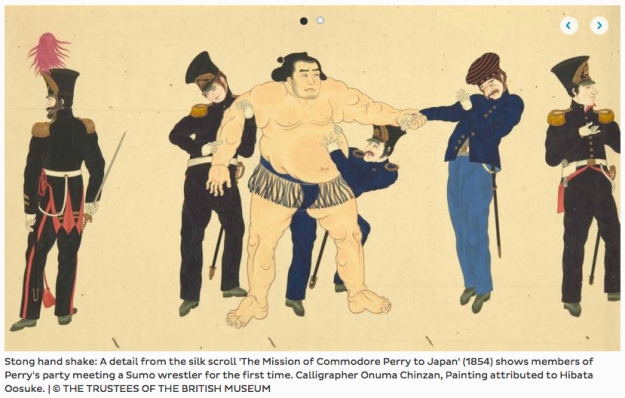February 24, 2022, and after.
Russia’s attempted seizure of Ukraine last year, and the ensuing ongoing war, crystalized a new international division. This division runs deeper than the machinations and miscalculations of one autocrat. A recent report, A World Divided: Russia, China and the West, summarizes the current global divide in political attitudes. Some major findings:
Compare positive versus negative attitudes to Russia …

to China …

and to the US.

The last map is a near mirror image of the first two (although a lot of Sub-Saharan Africans are fairly positive about all three great powers, and Iranians don’t seem to like anybody). Together the maps depict a world split in two, a Western / maritime rimland and an Old World heartland.
And the division reflects a deeper divide in politics …

and social attitudes …

The division in attitudes between the West and the two Eurasian powers has developed only recently, but it has roots that go back for centuries. At least this is consistent with the thesis of a recent book, The Deep Roots of Modern Democracy: Geography and the Diffusion of Political Institutions. The authors present a modern data-driven version of an old argument, that maritime trade and naval power foster liberal, constitutional, and democratic government. Where access to the sea and trade was limited, autocracy was (and is) more likely to prevail. Also, maritime zones tend to smaller political units – city states and nation states (albeit sometimes with overseas colonies) – while more land-based zones, riverine and steppe, tend to sprawling multinational empires. Here is a map (from an earlier article by the authors) of one set of underlying geographic determinants: natural harbors.

And here is their causal model:

Natural harbors, plus other factors in European history (here are a few from this blog), have fostered democratic development in some parts of Europe, and Europeans have brought democratic institutions with them as they have moved overseas (albeit sometimes democracy for whites only).
The appeal of a particular set of Western, and specifically Anglo-American, ideals – individualism, constitutional government, national self-determination – is broad but not universal. They developed in a particular geographic and historical context. A large portion of the world does not (pace the American Declaration of Independence) hold these ideals as self-evident truths, and even regards them (not always entirely without reason) as a mask for cynical power politics.
And so The End of History is unfinished work.





